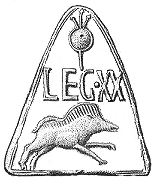
The Rosetta Stone is a stone slab dating to 196BC on which is written the same decree in three different ancient Egyptian languages, it was key to deciphering these languages in the modern era.
It strikes me that learning a new programming language is not really an exercise in learning the syntax of a new language, for vast swathes of languages those things are very similar. For an experienced programmer the learning is in the ecosystem. What we need is a Rosetta Stone for software development in different languages that tells us which tools to use for different languages, or at least gives us a respectable starting point.
To my mind the ecosystem specific to a programming language includes the language specification and evolution process, compiler/interpreter options, package/dependency management, virtual environments, project layout, testing, static analysis and formatting tools, and documentation generation. Package management, virtual environments and project layout are inter-related, certainly in Python (my primary programming language).
In researching these tools I was curious about their history. Compilers have been around since nearly the beginning of electronic computing in the late forties and early fifties. Modern testing frameworks generally derive from SmallTalk’s sUnit – published in 1989. Testing clearly went on prior to this – I am sure it is referenced in The Mythical Man Month and Grace Hopper is cited for her work in testing components and computers.
I tend to see package/dependency management as being the system by which I install packages from an internet repository such as Python’s PyPI repository – in which case the first of these was CPAN, for the Perl language first online in 1995, not long after the birth of the World Wide Web.
Separate linters date back, to 1978. Indent was the first formatter, written in 1976. The first documentation generation tools arose towards the end of the eighties (link) with JavaDoc which I suspect inspired many subsequent implementations appearing in the mid-nineties.
Tool choices are not as straightforward as they seem, in nearly all cases there are multiple options as a result of an evolution in the way programming is done more generally, or developers seeking to improve what they see as pain points in current implementations. Some elements are down to personal choice.
For my first two Rosetta Stone blog posts I look at Python and TypeScript. My aim is that the blog post will discuss the options and a GitHub repository will demonstrate one set of options in action. I am guided by my experience of working in a team on a Python project where we needed to agree a tool set and best practices. The use of development pipelines which run linters, formatters and tests automatically before code changes are merged, drove a lot of this work. The aim of these blog posts is, therefore, not to simply get an example of a programming language running but to create a project that software developers would be content to work with. The code itself is minimal, although I may add some more involved code in future.
I wrote the TypeScript in my “initial release” to see how the process would work for a language with which I was not familiar – it helped me understand the Python ecosystem better and gave me “feature envy”!
I found myself referencing numerous separate blog posts in writing these first two blog posts which suggests this Rosetta Stone is a worthwhile exercise. I also found my search results were not great, contaminated by a great deal of poorly written perhaps automatically generated material.
There are other, generic, parts of the ecosystem such as the operating system on which the code will run, the source control system and the Integrated Development Environment the developer uses which I will not generally discuss. I work almost exclusively on Windows but I prefer Git Bash as my shell. I use git with GitHub for source control and Visual Code as my editor/IDE.
When I started this exercise I thought that that there may be specific Integrated Development Environments used for specific languages. In the eighties and nineties when you bought a programming language the Integrated Development Environment was often part of the deal. This seems not to be the case anymore, most IDEs these days can be extended with plugins specific to a language so which IDE you start with is immaterial. In any case any language can be used as a combination of a text editor and command line tools.
I have been programming since I was a child in the early eighties. First in BASIC, then at university in FORTRAN, in industry in MATLAB before moving to Python. During that time I have also dabbled in C++ and Java but largely theoretical point of view. Although I have been programming for a long time it has generally been in the role of scientist / data scientist producing code for my own use, only in the last few years have I written code intended to be consumed by others.
These are my first two “Rosetta Stone” blog posts:
